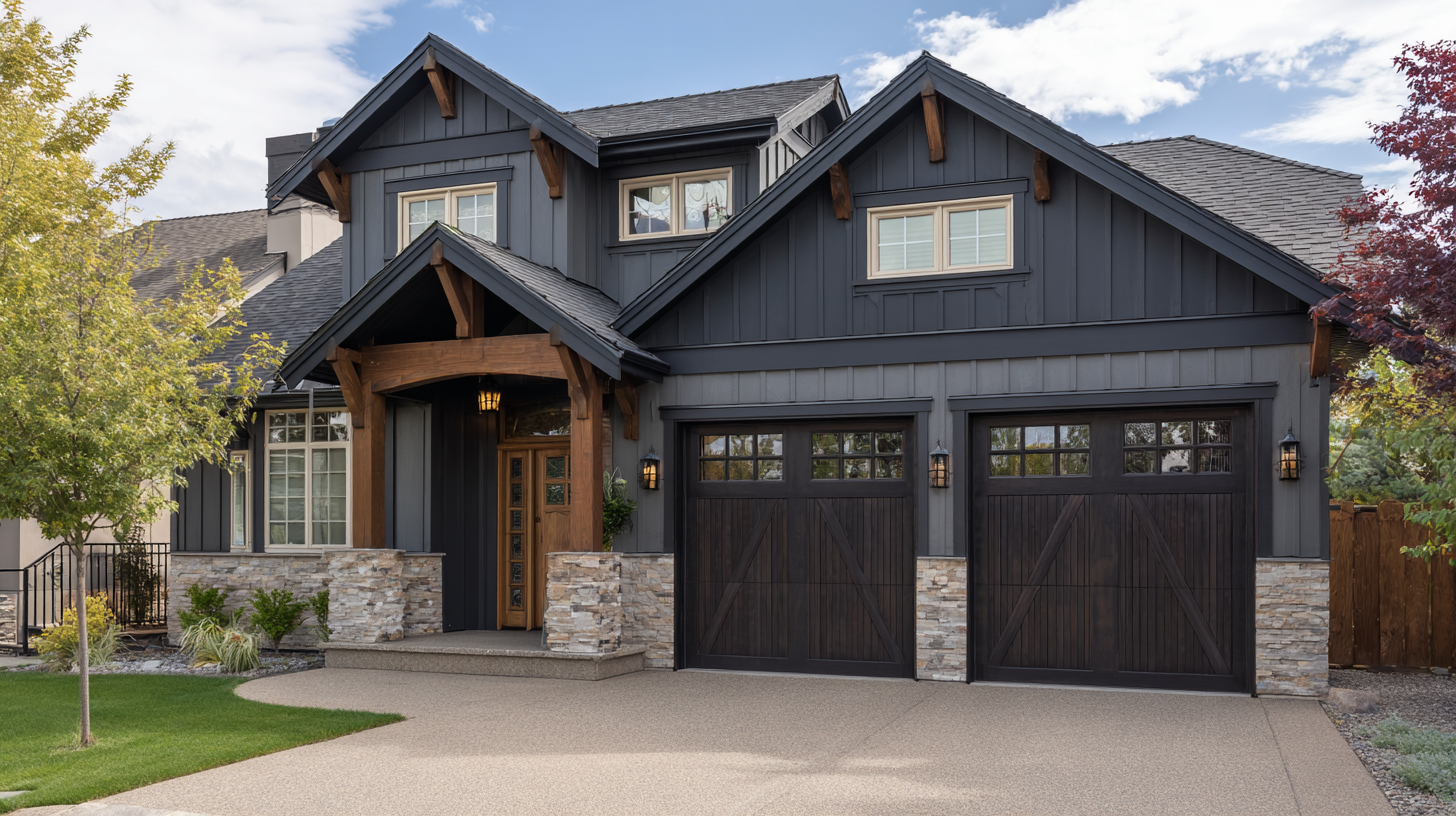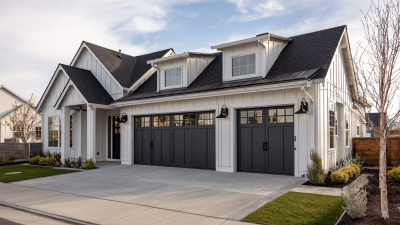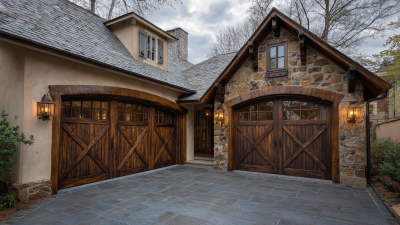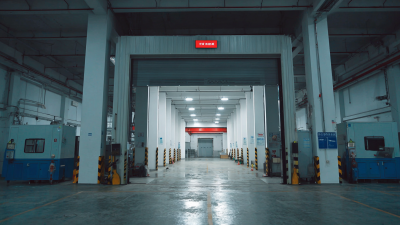When it comes to residential garage doors, choosing the right option is crucial not only for aesthetic appeal but also for energy efficiency. According to a recent report by the International Association of Certified Home Inspectors, over 30% of a home’s energy can be lost through a poorly insulated garage door. As home design trends evolve, homeowners are increasingly prioritizing both functionality and style. Notably, expert Ryan Johnson, a renowned consultant in the residential garage doors industry, emphasizes, “A well-chosen garage door can enhance your home’s curb appeal while reducing energy costs, making it a vital investment for any homeowner.”
In addition to energy efficiency, the variety of styles and materials available on the market today allows for personalized choices that can complement a home's architecture. The National Association of Home Builders reports that modern homeowners are opting for insulated doors that not only adhere to energy standards but also offer a sleek design. With such a significant impact on energy consumption and aesthetic value, understanding the options available for residential garage doors has never been more essential for homeowners looking to improve their properties.

When selecting residential garage doors, understanding energy efficiency ratings is crucial for both comfort and cost savings. Energy efficiency ratings, such as the R-value, provide insights into a door's insulation capabilities. Higher R-values indicate better insulation, which can help maintain stable indoor temperatures and reduce heating and cooling costs. Choosing a door with a high R-value is especially important in regions with extreme weather conditions, as it contributes to a more energy-efficient home.
In addition to R-values, homeowners should also consider other factors such as the door's material and design. Steel doors, for instance, often offer better insulation than aluminum ones and can also be designed with aesthetic appeal in mind. Additionally, look for doors that come with weather seals, as these can further enhance energy efficiency by preventing drafts. Ultimately, selecting a garage door that balances aesthetics and energy performance ensures that your home remains visually appealing while reducing energy expenses.
| Garage Door Type | Insulation Type | Energy Efficiency Rating (R-value) | Material | Aesthetic Appeal |
|---|---|---|---|---|
| Sectional Door | Polystyrene | R-10 | Steel | Modern |
| Roll-Up Door | Polyurethane | R-14 | Aluminum | Contemporary |
| Side-Hinged Door | None | R-5 | Wood | Rustic |
| Tilt-Up Door | Fiberglass | R-8 | Composite | Traditional |
When selecting a residential garage door, the choice of materials significantly influences both aesthetics and energy efficiency. Common materials include steel, wood, and fiberglass, each offering distinct advantages and styles. According to a report by the Garage Door Manufacturers Association, over 70% of homeowners prioritize the appearance of their garage doors, recognizing that they constitute a major part of their home’s façade.
Steel doors, often favored for their durability and low maintenance, can be finished in various styles and colors to enhance curb appeal. They are also available in insulated options that improve energy efficiency, reducing heating and cooling costs by up to 20% as noted in recent industry studies. On the other hand, wooden garage doors provide a classic look that can beautify any property. However, they require regular maintenance to prevent weather damage. The choice of material not only affects the visual appeal but also influences the longevity and energy performance of the garage door, making it a crucial decision for homeowners looking to invest wisely in their property.
When selecting residential garage doors, enhancing the curb appeal of your home should be a key consideration. First, the material of the garage door plays a crucial role in its visual impact. Options like wood, steel, or fiberglass come with their aesthetics, durability, and maintenance requirements. For instance, a wooden garage door, while charming and classic, may need regular staining or treatment against the elements, whereas steel options can provide a modern, sleek look with less upkeep.
Another important design feature is the color and finish of the garage door. Opting for a color that complements the overall exterior of your home can make a significant difference in how the property is perceived. Additionally, incorporating decorative elements like windows, foils, or raised panels can create visual interest. Windows not only allow natural light into the garage but also enhance the door's design, making the entrance more inviting. By thoughtfully considering these features, homeowners can achieve a stylish and energy-efficient addition that elevates their home's overall appeal.
When choosing residential garage doors, insulation plays a pivotal role in promoting energy efficiency. A well-insulated garage door can significantly reduce heat loss in the winter and keep the garage cooler during the summer, thereby contributing to lower energy bills. According to the U.S. Department of Energy, insulated garage doors can improve the overall thermal performance of a home, which is especially beneficial in climates with extreme temperatures. Options with an R-value of 10 or higher provide notable energy-saving advantages, helping homeowners to offset rising utility costs.

Tips for selecting the right insulated garage door include considering materials like steel or fiberglass, which typically offer better insulation properties than uninsulated wood. Additionally, look for doors with a layered construction that incorporates insulation between panels. Opt for models with weather seals around the edges to further enhance energy efficiency by minimizing drafts and outside air infiltration. Investing in a high-quality insulated garage door not only enhances the aesthetics of your home but also contributes to long-term energy savings.
When selecting residential garage doors, finding the right balance between cost and durability is essential. According to the International Door Association, the average lifespan of a garage door is between 15 to 30 years, depending on the material and maintenance practices. Steel doors, for instance, typically offer superior durability and can withstand harsh weather conditions while costing around $750 to $3,500. Their resilience not only provides long-term value but also reduces the need for frequent repairs or replacements, offsetting initial costs over time.

On the other hand, wooden garage doors can offer beautiful aesthetics but may require more upkeep. A report from the Garage Door Manufacturers Association highlights that while the purchase price of wooden doors starts lower than steel, the long-term maintenance costs – such as refinishing every few years – can significantly add to overall expenses. Furthermore, energy efficiency is a consideration; insulated steel doors, though pricier upfront, can improve energy conservation, potentially reducing heating and cooling bills by 15-25%, thus enhancing the overall value of one's investment. Balancing these factors will ensure homeowners make an informed decision that aligns with both their budget and lifestyle needs.






